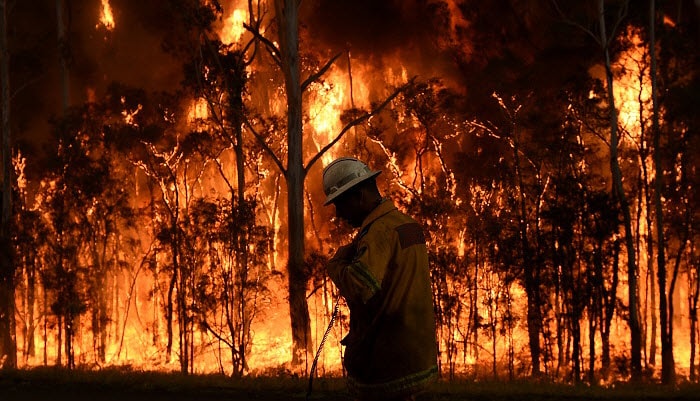Safeguarding Your Home: The Important Role of a BAL Report in Bushfire Preparedness
Safeguarding Your Home: The Important Role of a BAL Report in Bushfire Preparedness
Blog Article
Navigating Bush Fire Defense Regulations With BAL Report
Central to this undertaking is the Bushfire Assault Degree (BAL) record, a critical record that analyzes the prospective direct exposure of a property to bushfire. By diving into the complexities of BAL evaluations and their implications for constructing compliance, stakeholders can proactively manage bush fire risks and safeguard buildings versus potential dangers.
Comprehending Shrub Fire Protection Regulations
To effectively navigate the intricacies of bush fire protection guidelines, it is vital to have a clear understanding of the governing guidelines and needs in position. Shrub fire security laws are important for safeguarding homes and lives in areas vulnerable to bushfires. These policies develop the standards and procedures that homeowner need to stick to in order to reduce the threats associated with bushfires.

Importance of BAL Analyses
Understanding the relevance of BAL assessments is essential in guaranteeing conformity with bush fire protection policies and properly reducing the threats related to bushfires. BAL evaluations, which figure out the Bushfire Strike Level of a residential property, are crucial for developing ideal bush fire defense measures tailored to the specific danger account of the website. By reviewing factors such as plants kind, range to possible fire hazards, and slope of the land, BAL evaluations offer valuable insights into the level of danger a residential or commercial property deals with during a bushfire occasion.

Effects for Building Compliance
Navigating through building conformity needs according to BAL evaluations is essential for making sure frameworks are sufficiently fortified against the dangers positioned by bushfires. Building conformity describes adhering to the criteria and guidelines stated to enhance the safety and strength of buildings in bushfire-prone areas. The effects of structure conformity in connection with BAL evaluations are significant. Frameworks that stop working to meet the essential compliance criteria go to a higher threat of enduring damage or devastation throughout a bushfire event. This not only jeopardizes the residents but also poses a risk to the surrounding environment.
Making sure structure compliance includes cautious planning, construction, and upkeep to mitigate the prospective effect of bushfires. It needs a complete understanding of the BAL score designated to the property and implementing the proper procedures to improve its fire protection capacities.
Taking Care Of Shrub Fire Threats Successfully
Provided the crucial significance of building compliance in fortifying structures against bushfire dangers, Homepage effectively managing these dangers requires a thorough strategy that focuses on positive mitigation strategies. Clearing up combustible vegetation, developing defensible rooms, and making certain proper maintenance can dramatically minimize the threat of fire spreading to the residential property. By incorporating these proactive actions, residential or commercial property proprietors can properly take care of bushfire threats and increase the security of their structures and owners.
Practical Tips for Homeowners and Developers
Effectively taking care of bushfire risks as a property owner or designer necessitates carrying out useful mitigation methods customized to the residential property's details susceptabilities and surroundings. One crucial tip is to keep a properly maintained defensible area around frameworks, commonly a minimum of 30 meters in high-risk areas. This area ought to be clear of combustible greenery, particles, and other flammable materials that could possibly sustain a fire. In addition, selecting fire-resistant structure materials can substantially boost the home's capacity to withstand ember assaults and direct flame contact. Ensuring that windows, wall surfaces, and roofing systems are built or upgraded to fulfill pertinent bushfire security standards is vital.
In addition, developing an emergency situation strategy and practicing evacuation Full Report drills with family members lessees, employees, or members can save lives in case of a bushfire. Staying informed regarding regional fire danger rankings, weather, and emergency situation notifies is additionally essential for making timely decisions to safeguard life and residential property. Last but not least, engaging with local fire authorities, area teams, and professionals experienced in bushfire management can give important assistance and support in developing detailed bushfire defense methods.
Verdict
To conclude, browsing bush fire protection policies with a BAL record is important for making certain structure compliance and managing bush fire risks properly. Recognizing the relevance of BAL evaluations and complying with practical suggestions can assist property owners and designers mitigate the influence of bush fires. By adhering to these policies and taking needed preventative measures, people can produce safer atmospheres on their own and their communities.
Trick parts of bush fire defense guidelines consist of the Bushfire Attack Degree (BAL) analysis, which figures out the degree of threat a residential or commercial property deals with from bushfires. BAL assessments, which determine the Bushfire Attack Level of click for more a building, are critical for developing suitable bush fire defense procedures customized to the specific threat profile of the site. By reviewing aspects such as plants type, range to prospective fire risks, and slope of the land, BAL analyses provide important understandings right into the degree of risk a residential property deals with during a bushfire occasion.

In conclusion, navigating bush fire defense laws with a BAL record is critical for making certain structure compliance and handling bush fire dangers efficiently.
Report this page